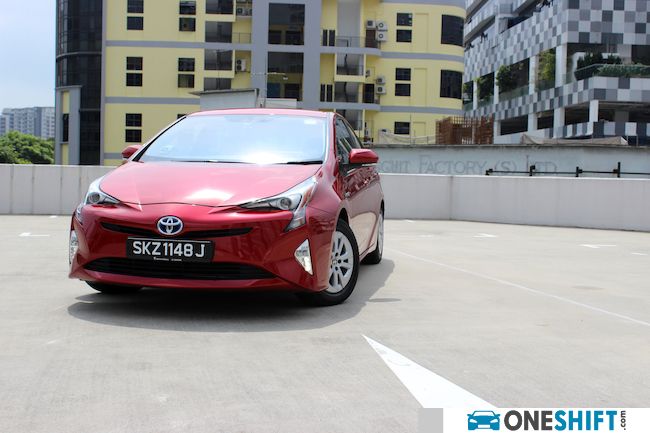Should We Move to a CO2 - Based Road Tax Regime?
Recently I had the chance to drive an Audi A1. They say it doesn’t take long for a man to fall in love, and in the past few days I can personally attest to that as well. The few trips taken between work and the Airport revealed the Audi to be quite the peppy little thing, its short wheelbase imparting it characterful busy handling on the twisty, while its low kerb weight ensured good acceleration on the straight. Throw in a few features such as Audi’s MMI system and the A1 is, in short, utterly sublime for all the commuting demands of your typical bachelor.

Recently I had the chance to drive an Audi A1. They say it doesn’t take long for a man to fall in love, and in the past few days I can personally attest to that as well. The few trips taken between work and the Airport revealed the Audi to be quite the peppy little thing, its short wheelbase imparting it characterful busy handling on the twisty, while its low kerb weight ensured good acceleration on the straight. Throw in a few features such as Audi’s MMI system and the A1 is, in short, utterly sublime for all the commuting demands of your typical bachelor.
But it comes with one additional party trick: available with a mere 1 litre of engine capacity, the A1 will invite only $392 worth of road tax per annum – basically the same road tax burden as a new Suzuki Swift.

1 for 1: Audi's 999 cc engine provides a premium motoring experience while returning economical running costs.
When our road tax regime was conceived it was a world where cars from the premium marques were only available with larger engines. A rough correlation existed between the price, engine size, physical dimension, weight, and power of car, the latter three attributing to greater road space use and wear, thus inviting a greater tax burden.
But the story today has changed dramatically: the adoption of CO2based taxation regimes across Europe, as well as legislative pressure to bring down average fleet emissions have led manufactures to downsize engine options across models, bringing huge technological advances to a new generation of smaller engines that allow them to produce greater power while simultaneously reducing their emissions. Locally, this has meant that even once premium nameplates are now available with engine sizes that once were the reserve of economy cars. Consider for example, how the new Mercedes A-class now starts as a 1.3 litre while the C-class is available with a 1.5 litre engine.

With 161hp, the 1.3 litre in the Mercedes A200 is no slouch.
Not only are our expensive vehicles now incurring lower tax rates, but there also are plenty of examples whereby the old logic of taxation based on engine swept capacity is being stretched: the best known of these is perhaps the Toyota 1.8 used in the Prius. With a CO2 output of only 78g/km, as well as an industry leading operating thermal efficiency of 40% the eco-credentials of this engine are hardly disputed, yet it foots a far larger tax burden than any of the above mentioned cars, in spite of the fact that it utilises that increased swept capacity in order to run on an Atkinson cycle which ensures cleaner and more efficient fuel burn.

The Toyota Prius meanwhile incurs an annual road tax of $976 with a 1.8 litre engine
Meanwhile, the widespread use of turbocharging has also created a sizeable gulf in the power output between engines that make use of forced induction, and those that do not. The normally-aspirated 2.0 litre in a Subaru XV puts out 154hp, for example, while the 1.6 litre turbo available in the Levorg is capable of 168hp. When you further consider that the XV has a lower CO2 output per km (159 g/km vs. 169 g/km) as well as lower fuel consumption (7.0 l/100km vs. 7.4 l/100km), it becomes clear that the turbocharger in the 1.6 litre Levorg allows it to burn through fuel faster than the larger 2.0 litre engine, yet the XV still pays the greater road tax burden, unfairly raising its running costs when compared against the Levorg.
Occasional instances of cheating aside, the utilisation of a CO2 based regime will allow us to better modulate tax rates across engine choices: premium marques that wish to continue to sell high-powered 3 cylinder engines will have to invest more in efficiency gains or else face a stiffer tax penalty, while more ecologically-minded designs targeting lower power outputs will remain shielded under this tax regime. Meanwhile, as international testing standards for CO2 emissions begin to pay more focus on real world driving conditions, heavier vehicles will start face larger tax rates owing to the greater power demanded to accelerate a larger mass. Finally, such a tax regime will also continue to incentivise the purchase of engine technologies that aid efficiency or curb harmful emissions, regardless of the engine size they are implemented on.
Credits: Clarence Seow


Get the Best Price for your used car
from 500+ dealers in 24 hours

- Convenient and Hassle-Free
- Consumer Protection
Transparent Process
With No Obligation








